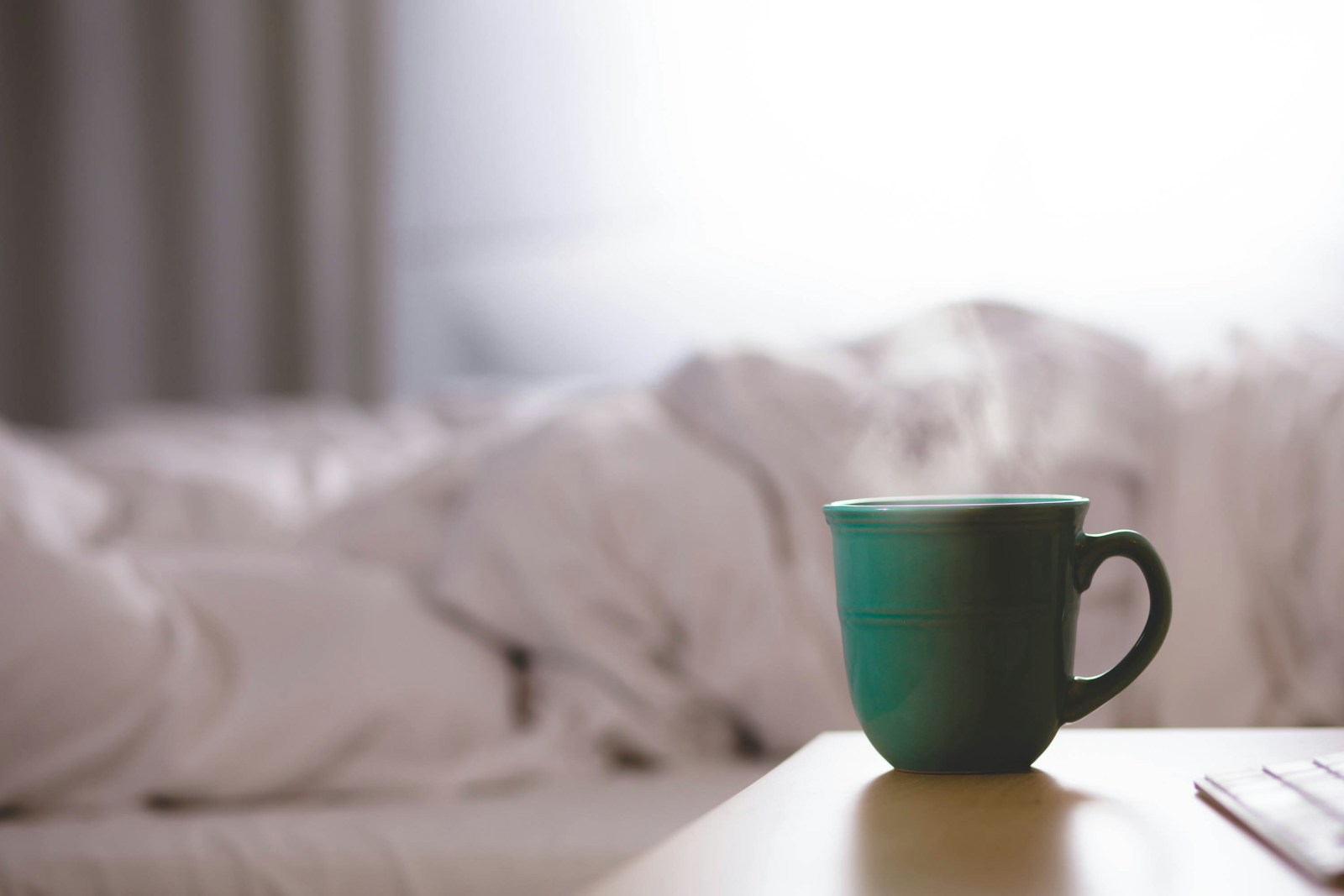How To Improve Your Indoor Air Quality

Whether you’re indoors or outdoors, the quality of the air you breathe can have a big impact on your health. Studies have tied poor outdoor air quality to severe health consequences.
The air inside your home, however, can be even more polluted than the air outside, according to the Environmental Protection Agency (EPA). Research shows we spend most of our time indoors, which is all the more reason to start cleaning our indoor air.
Top Sources of Indoor Air Pollution
There are a myriad of reasons why your indoor air can be polluted. Some sources, such as furnishings and building materials, can release pollutants more or less continuously, according to the EPA. Other sources, like smoking, cleaning, or renovating, release pollutants intermittently. Unvented or malfunctioning appliances can release potentially dangerous levels of pollutants indoors (which is why it’s so important to have a working carbon monoxide detector in your home). Even certain trendy and useful appliances (we’re looking at you, gas stoves) are notoriously bad for air quality.
And if you think spraying scented air freshener will clean your air, think again. That scent is also a form of indoor air pollution, and most air fresheners just release more potentially harmful chemicals into your home. The health issues caused by those chemicals cost about $340 billion per year in treatment and lost productivity expenses, according to a study published in The Lancet.
Here are some tips on improving your indoor air quality without the use of harmful chemicals.
1. Open Your Windows
:max_bytes(150000):strip_icc():format(webp)/ways-get-clean-air-without-chemicals-4864310-05-19305d9634f44a81a36434ee8a240829.jpg)
It’s the simplest (and cheapest!) thing you can do to improve your indoor air quality. Open your windows for even just five minutes a day to alleviate the accumulation of harmful air pollutants in your home. Consider sleeping with a window cracked open at night (layer on extra blankets at night in winter) to ensure a clean air supply. Make a point of always opening windows in rooms you’re cleaning; the fresh air will also add to the final impression of cleanliness.
2. Clean The Air With Houseplants
:max_bytes(150000):strip_icc():format(webp)/ways-get-clean-air-without-chemicals-4864310-08-4d297e3f13604114909739757a0c409a.jpg)
Several types of houseplants filter out common volatile organic compounds (VOCS) from your indoor air. Having indoor houseplants can help improve indoor air quality, according to a study published by Nasa. For example, spider plants are effective at reducing benzene, formaldehyde, carbon monoxide and nitrogen dioxide. NASA says that “both plant leaves and roots are utilized in removing trace levels of toxic vapors from inside tightly sealed buildings. Low levels of chemicals such as carbon monoxide and formaldehyde can be removed from indoor environments by plant leaves alone.”
Top 5 houseplants for removing indoor air pollution.
- Snake Plant (Sansevieria trifasciata): Snake plants are known for their ability to remove toxins like formaldehyde and benzene from the air. They are low-maintenance and can thrive in various lighting conditions.
- Spider Plant (Chlorophytum comosum): Spider plants are excellent at removing formaldehyde, xylene, and carbon monoxide from the air. They are easy to care for and produce “spiderettes” that can be propagated into new plants.
- Aloe Vera (Aloe vera): Apart from its medicinal properties, aloe vera is an effective air purifier, particularly for formaldehyde. It’s a succulent plant that requires minimal watering and prefers bright, indirect light.
- Peace Lily (Spathiphyllum): Peace lilies are known for their ability to filter out harmful toxins like formaldehyde, benzene, and trichloroethylene. They also add a touch of elegance with their beautiful white flowers. Keep in mind that peace lilies are toxic to pets if ingested.
- Boston Fern (Nephrolepis exaltata): Boston ferns are highly effective in removing formaldehyde, xylene, and other volatile organic compounds (VOCs) from the air. They thrive in high humidity and indirect light, making them suitable for bathrooms or kitchens.
3. Opt for Essential Oil Diffusers
:max_bytes(150000):strip_icc():format(webp)/ways-get-clean-air-without-chemicals-4864310-11-251240c3840843e4b51565fd3d903058.jpg)
Some essential oils, like tea tree oil, have antibacterial properties and can be added to homemade household cleaners or even applied topically to your skin to treat a small cut. But did you know these oils also can reduce airborne bacteria? Essential oils like eucalyptus, clove and lavender have been proven to help reduce the number of dust mites in your house, too.
4. Opt for Beeswax Candles
:max_bytes(150000):strip_icc():format(webp)/ways-get-clean-air-without-chemicals-4864310-14-2806407bf021452c8c4117d037dbb489.jpg)
Bear with me on this one, because it’ll get a little scientific. In addition to the oxygen we need for our bodies to function properly, the air we breathe also contains other gases, and some combination of various chemicals and minuscule particles. Many of these chemicals and particles are pollutants that pose a health risk after entering the body via the lungs. Some studies even show a link between inhalation of ultra fine particles and the development of diabetes or cancer.
Some people argue that pure beeswax candles can help neutralize these particles in much the same way as plants, cleaning the indoor air. Still, more research is needed to understand whether beeswax candles can truly clean air.
It is important to note that burning any kind of candle still sends soot up into your air, so you’ll still want to ensure proper ventilation in your home.
5. Take Your Shoes Off
:max_bytes(150000):strip_icc():format(webp)/ways-get-clean-air-without-chemicals-4864310-19-5848eeeccb254bb18883effc0253e1a3.jpg)
The dirt outside can carry some really yucky stuff—pesticides, pollen, fungi, bacteria, and feces, to name a few. When you walk inside your house, any or all of that could be on the bottom of your shoes, so it’s best to take them off when you get inside or swap for a pair of slippers. It’ll help keep your air cleaner, not to mention your floors.
5 reasons to leave your shoes at the door.
- Outdoor pollutants: When we walk outdoors, our shoes can pick up various pollutants such as dust, pollen, bacteria, fungi, pesticides, and other contaminants. These particles can easily stick to the soles of our shoes and be tracked inside, releasing them into the indoor air.
- Chemical residue: Streets and sidewalks are often treated with chemicals like pesticides, herbicides, and fertilizers. These chemicals can cling to shoes and transfer into our homes, leading to indoor air pollution. Additionally, asphalt and pavement may contain substances like heavy metals or petroleum byproducts that can be brought indoors via shoes.
- Allergens and irritants: Shoes can carry allergens like grass, pollen, and mold spores, which can trigger allergic reactions in susceptible individuals. Moreover, shoes can collect irritants such as pet dander, dust mites, or droppings from outdoor pests like birds or insects, all of which can worsen respiratory conditions.
- Bacteria and germs: Our shoes come into contact with various surfaces, including public restrooms, streets, public transportation, and other potentially unclean environments. These surfaces harbor bacteria and germs that can easily be transported into our homes, increasing the microbial load and potentially causing illnesses.
- Floor cleanliness: Wearing shoes indoors can lead to dirt, mud, and debris being spread across the floors, making it more challenging to maintain a clean living environment. This can result in the accumulation of dust and particles, which contribute to poor indoor air quality.
By adopting a no-shoes policy indoors and encouraging family members and guests to remove their shoes upon entering, you can minimize the introduction of outdoor pollutants, reduce the workload for cleaning, and help maintain cleaner and healthier indoor air.
6. Keep Your Pets Groomed
:max_bytes(150000):strip_icc():format(webp)/ways-get-clean-air-without-chemicals-4864310-21-da24268b175b4b07a42bc5d5e72b0818.jpg)
Pet dander—your pet’s skin cells—is found nearly everywhere in a home with pets. Even more than pet fur, dander can cause you to develop asthma-like symptoms or exacerbate your asthma if it already exists. If you have a pet, be sure to keep dander to a minimum by cleaning them regularly, brushing them outdoors if you can, and vacuuming floors and furnishings regularly with a HEPA filter. One of the best air purifiers to remove pet dander is the Pets Air Purifier from Himox.
7. Run the AC
:max_bytes(150000):strip_icc():format(webp)/ways-get-clean-air-without-chemicals-4864310-26-eda9927586744a3ca7e95cb850f33244.jpg)
If you have central air conditioning, you already have a whole-house air filtration system at your disposal. It works by pulling air out of your house, cooling it and pumping it back in. Most systems have a filter that you need to change regularly, and this filter can trap particles while it does its job. The more you change it, the better. Find out what kind of AC system you have and what its manufacturer recommendations are for changing your filters. (The same goes for changing your furnace filter regularly.) When it comes to choosing the best air filters for homes, it’s important to consider various factors. There are several types of air filters available, each with its own strengths and purposes.
Fiberglass filters are basic and affordable but are not effective at capturing smaller particles or allergens.
Pleated filters have a larger surface area and can capture smaller particles like pollen and pet dander.
HEPA filters are highly efficient at trapping small particles and are recommended for those with allergies or respiratory conditions.
Activated carbon filters are great for eliminating odors and gases.
Electrostatic filters use an electrostatic charge to attract particles and can be either washable or disposable.
UV filters utilize ultraviolet light to kill microorganisms. The choice of the best air filter depends on specific air quality needs, allergies, and budget, and consulting with an HVAC professional can provide valuable guidance in making the right selection.
8. Clean With Non-Toxic Chemicals
:max_bytes(150000):strip_icc():format(webp)/ways-get-clean-air-without-chemicals-4864310-27-8268142e54bb46e892eee6f1cccf5489.jpg)
Many store-bought household cleaners contain toxic chemicals that can cause eye, throat and lung irritation. They’re best avoided, but if you’re going to use them, at least open windows while you do. But as a greener option, consider making your own household cleaners using ingredients such as vinegar, baking soda, citrus juice or essential oils. There are also plenty of great green cleaning companies selling products that are as effective as conventional ones and spare you the hassle of mixing your own. Best Life, Dr. Bronner, Seventh Generation, and Puracy are a few worth checking out.
9. Use an Air Purifier
Air purifiers can be an effective way to reduce harmful particles in the air. If your child has asthma, it may be worthwhile to have one in his room. Find out which one is right for you using the EPA’s guide.
10. Get Rid of Mold
These types of fungus can release spores into the air that can trigger allergy symptoms. Mold likes to grow in dark, damp places, such as a bathrooms, laundry rooms, and basements. But you don’t need to bleach it away. Use simple, chemical-free ingredients to rid your home of mold.
11. Air Out New Furniture
:max_bytes(150000):strip_icc():format(webp)/ways-get-clean-air-without-chemicals-4864310-29-8d6536a931fc41b2999b22a142549d66.jpg)
Volatile organic compounds (VOCs) are chemicals that linger in the air, and they are everywhere in our homes. VOCs such as toluene and benzene are found in things like glues, paints, fabrics, construction materials and more.19 When you buy a new sofa or armchair, know this: it will emit VOCs more heavily at first and then taper off. To reduce the harm to your indoor air, air out as much as possible to allow VOCs to escape. If you can, keep it in your garage for a week, or keep the windows in that room open most of the day for the first few months. You can also look for used furniture and textiles, as these are far more likely to have already off-gassed any nasty toxins.
12. Use Cooking Oils With Higher Smoke Points
:max_bytes(150000):strip_icc():format(webp)/ways-get-clean-air-without-chemicals-4864310-31-e3e7804ba5e24d75b96d7cbbe03d9eda.jpg)
To avoid a kitchen filled with smoke and a lingering smell of burnt oil wafting through your house for hours, use a cooking oil that smokes at higher temperatures. Extra virgin olive oil has a lower smoke point compared to avocado, peanut, safflower, canola, corn, and sunflower oil. If you prefer the taste of olive oil, you can use light olive oil, which has been refined and has a smoke point between 390 F and 470 F, compared to 350 F to 410 F for extra virgin olive oil, according to the North American Olive Oil Association.20
Worth mentioning, too, is the stove you’re cooking on—certainly harder to replace than the cooking oil you use, but important to keep in mind for future upgrades. Natural gas is notorious for increasing nitrogen dioxide and PM2.5 (particulate matter) pollution indoors. The Rocky Mountain Institute noted that homes with gas stoves “have approximately 50 percent to over 400 percent higher average NO2 concentrations than homes with electric stoves.” It’s a major source of indoor air pollution that deserves greater attention.
Why We Should Use Green Cleaning Products And How to Make Your Own
As the health and environmental impacts of conventional cleaning products become more thoroughly understood, more and more brands of healthy, green, and effective cleaning products have started hitting the market and competing for that coveted place of honor under your sink. Many of these products are non-toxic, biodegradable, and made from renewable resources (not petroleum). But if designer labels aren’t for you, home-mixed cleaners can get the job done and then some. Vinegar and baking soda can be used to clean almost anything. Mix in a little warm water with either of these and you’ve got yourself an all-purpose cleaner.



